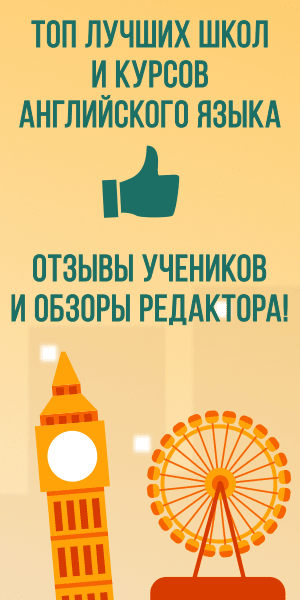Nancy Mellon once said, «Because there is a natural storytelling urge and ability in all human beings, even just a little nurturing of this impulse can bring about astonishing and delightful results.» Although I am not an education major, I believe that we all have a responsibility to impact the lives of younger generations, whether it is our siblings, cousins, family friends, or our own kids one day. I have worked at a summer camp, taught Sunday school, and am now working at a daycare. I feel as though we all have the power to be great storytellers, all we need is a little nudge to bring it out. I took Children’s Literature looking for that nudge to help me in my classroom. As the end of the semester approaches, I can say I have found that nudge and have a greater interest and passion when telling stories to the children in my class.
I am currently employed at a child care center in Youngest Preschool, which is the class designed for two-year-olds. Since I read to them on a daily basis, I decided to read my selected book, «Are you my Mother» by P.D. Eastman to them for this assigned project. My class is very diverse, with children from different races, backgrounds, and family situations; we even have a special needs child included in our class.
I also decided to read «Are you my Mother?» to the Kindergarten class in the same child care center. I chose to read the same book to each age level because I wanted to see the different experiences I would have. This particular kindergarten class is also very diverse.
I chose to read «Are you my Mother?» because I knew that the Youngest Preschool class I work with would enjoy it, and was interested to see if the children upstairs in kindergarten would as well. «Are you my Mother?» was one of my favorite books growing up, and was one of the first books I learned to read; so I thought that perhaps some of the kindergarteners would be familiar with it.
As story time was approaching in Youngest Preschool, I had the children come sit down on our «circle time mat.» Once they were all sitting, we sang a little song to get them ready. It does like this «I have to hands that clap, clap, clap. I have two fingers that snap, snap, snap. I have to thumbs that tap, tap, tap. I have two hands and they’re folded in my lap!» This rhyme is one of many that I use to get the children sitting properly.
Working with two-year-olds on a daily basis, I have learned that you cannot simply read a story to them, but you need to interact with them in your storytelling. And «Are you my Mother?» was a great book that enabled me to do that. My students love making animal sounds, so every time the little bird approached a new animal, we would stop and all make the sound of that particular animal. This kept the children very interested and kept their attention.
Another little trick I used to keep them listening is asking them questions that relate to their lives. For instance, at one point the baby bird walks right by his mother and does not know it is her. At this point, I stopped and asked the children questions like «do you know what your mommy/daddy looks like?» and even elaborated with questions like «what color hair, eyes, etc. does she/he have?» Asking the little children questions like this keep them interested. One last thing I used to help tell the story was occasionally, I would get out of my seat, and act out a part of the book. For example, at one point the baby bird runs up to an old car to see if it’s his mother; so in our class, we have a plastic toy car. So while telling the story, I got up and ran to the car, and asked it «are you, my mother?» I have found that little things like this keep the children awake, attentive and even make them laugh.
I had an entirely different approach, and therefore experience when reading to the kindergarten children. This particular kindergarten class has been taught well how to sit and listen during story time, so some of the attention keepers used on the daycare class were not needed. While reading to the kindergarten class, I used different tones in my voice, including voices of excitement, fright, sadness, and determination. The kindergarten class enjoyed this book, but many of them told me afterward that they have already heard the story several times and it is one of their favorites as well.
After telling the story to the two-year-old class, I followed up with a song called «Animal Exercise.» This song has the kids to exercises while incorporating animal names and sounds. For example, it instructs the kids to swim like a frog, reach like a giraffe, and fly like a bird. I decided to use this activity because after sitting nice and quiet, it gave the children the chance to get up and be active. Also, since «Are you my Mother?» includes many animals, I thought this song was a good choice to continue with the animal theme.
As far as my follow-up with the kindergarten class, after I finished the story, we briefly discussed how this little bird lost his mother, and how scary that must have been. I asked the children if they have ever been in a situation where they were lost from their mom or dad for a short time, and a few students shared their experiences with the class. Once the discussion was over, I had prepared a coloring page of a baby bird and its mother in their nest, so I had all the children move to their tables, where they colored their pictures.
My technique and approach to the two different age levels were very different; however, I felt they were appropriate for each particular class. I had a positive experience with my reading to them. With my class, I read to them every day and I have become aware of what works and what does not. In the beginning, it was very stressful at times for me to tell them a story because I did not know how to keep them seated and quiet. After many days of experience and with advice from coworkers, I have learned ways to better tell stories to these two-year-olds.
An Indian Proverb states: «Tell me a fact and I’ll learn. Tell me a truth and I’ll believe. But tell me a story and it will live in my heart forever.» I believe that children not only enjoy listening to stories, but the stories stay with them. The particular book I choose did not have a life lesson included in it, but I feel like those that do stay with a child. It’s one thing to tell a child to be nice to others, but I feel like they really grasp the concept by hearing a story that has the meaning hidden somewhere in it. Storytelling is an important part of a child’s learning experience and I have seen this both in a young preschool class, as well as in a kindergarten class, and have even seen it while working at a summer camp with second to fifth graders. My experiences for this project were positive and put into practice some of the things we have been learning all semester; not necessarily by book, but by interacting with others in the class, reading stories to one another, and hearing stories read to us. I feel that by reading and listening to stories, we learned how to become storytellers and that natural urge in all of us has brought «astonishing and delightful results.»








